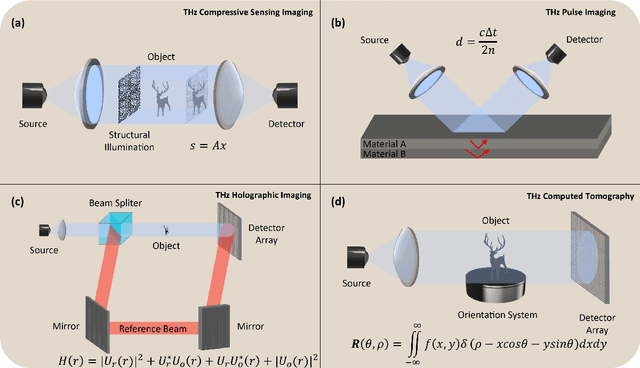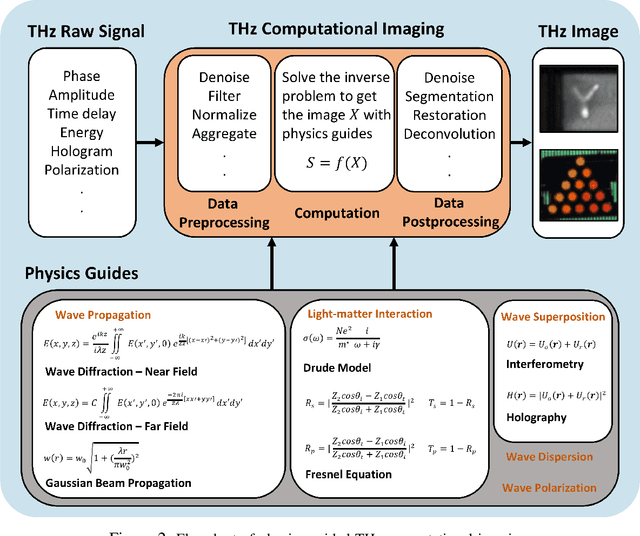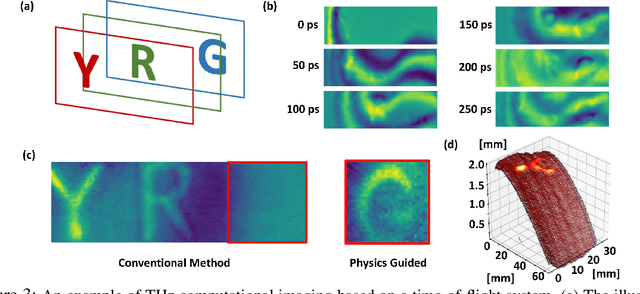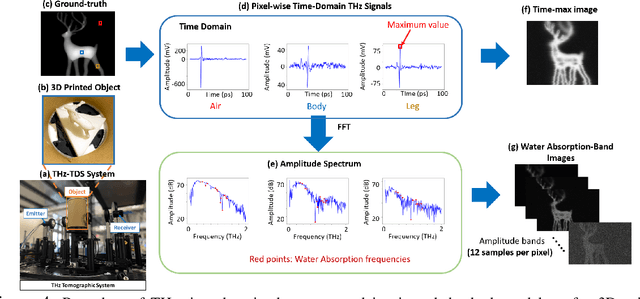Po-Jen Yu
Making the Invisible Visible: Toward High-Quality Terahertz Tomographic Imaging via Physics-Guided Restoration
Apr 28, 2023Abstract:Terahertz (THz) tomographic imaging has recently attracted significant attention thanks to its non-invasive, non-destructive, non-ionizing, material-classification, and ultra-fast nature for object exploration and inspection. However, its strong water absorption nature and low noise tolerance lead to undesired blurs and distortions of reconstructed THz images. The diffraction-limited THz signals highly constrain the performances of existing restoration methods. To address the problem, we propose a novel multi-view Subspace-Attention-guided Restoration Network (SARNet) that fuses multi-view and multi-spectral features of THz images for effective image restoration and 3D tomographic reconstruction. To this end, SARNet uses multi-scale branches to extract intra-view spatio-spectral amplitude and phase features and fuse them via shared subspace projection and self-attention guidance. We then perform inter-view fusion to further improve the restoration of individual views by leveraging the redundancies between neighboring views. Here, we experimentally construct a THz time-domain spectroscopy (THz-TDS) system covering a broad frequency range from 0.1 THz to 4 THz for building up a temporal/spectral/spatial/ material THz database of hidden 3D objects. Complementary to a quantitative evaluation, we demonstrate the effectiveness of our SARNet model on 3D THz tomographic reconstruction applications.
Physics-guided Terahertz Computational Imaging
Apr 30, 2022



Abstract:Visualizing information inside objects is an ever-lasting need to bridge the world from physics, chemistry, biology to computation. Among all tomographic techniques, terahertz (THz) computational imaging has demonstrated its unique sensing features to digitalize multi-dimensional object information in a non-destructive, non-ionizing, and non-invasive way. Applying modern signal processing and physics-guided modalities, THz computational imaging systems are now launched in various application fields in industrial inspection, security screening, chemical inspection and non-destructive evaluation. In this article, we overview recent advances in THz computational imaging modalities in the aspects of system configuration, wave propagation and interaction models, physics-guided algorithm for digitalizing interior information of imaged objects. Several image restoration and reconstruction issues based on multi-dimensional THz signals are further discussed, which provides a crosslink between material digitalization, functional property extraction, and multi-dimensional imager utilization from a signal processing perspective.
 Add to Chrome
Add to Chrome Add to Firefox
Add to Firefox Add to Edge
Add to Edge